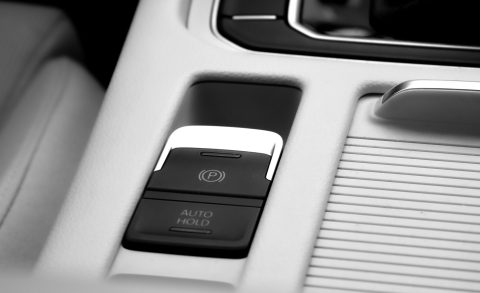
Park mode versus handbrakes: trouble in the car wash
The end of the manual parking brake has a direct impact on car wash operations. Ever so often, you see agitated drivers at the entrance of a car wash trying to release the automatic parking brake. Employees should be on hand quickly with appropriate tips to avoid delays in the wash process.
Older drivers had to get used to the automatic parking brake, while younger drivers are almost unfamiliar with cars which have a different braking system. In daily use, the automatic parking brake is convenient and reliable. You won’t find many drivers who switch it on and off regularly. But in the car wash, the inconspicuous button suddenly becomes relevant.
A blocked car
If a modern vehicle with an electronic parking brake enters a car wash, problems can arise. As soon as the driver routinely sets it to “P” for park, the activated, automatic parking brake reacts and the car does not move any further. Then, when the tunnel transport system is starting to pull on the front wheels, the parking brake locks the rear axle. Drivers get nervous and employees quickly become aware of this malfunction.
Not every car wash customer will immediately know what’s wrong. Then something could happen that car wash developers want to avoid at all costs: to start a wash with an uneasy feeling or even fear.
Avoiding the tunnel
Even if the customer quickly gets over the moment of fright, the uneasy feeling still lingers during the car wash. Many customers are also embarrassed in front of the employees that they do not have their own car sufficiently under control.
Worst case scenario is, when a customer avoids a tunnel car wash in the future and will choose a gantry car wash or self-service bay instead.
Safe hands
To avoid incidents and uncertainty, employees should think of quick and friendly tips for customers for the most common incidents in car washes. Even under time pressure and the tension of troubleshooting, it is important to remember that every car wash customer decides again and again which car wash to go to.
Pro-active employees will be appreciated by uncertain customers. They will return to the chosen car wash, knowing they are in safe hands.
Also read:
- Why did VW post an incomplete car wash video on E-cars?
- ORLEN invests in charging and washing
- TotalEnergies: Car wash at gas station attracts more customers
- Christ opens first commercial car wash in China
- Istobal opens new metro rollover in Riyadh
- How to properly introduce innovations to car wash customers?



